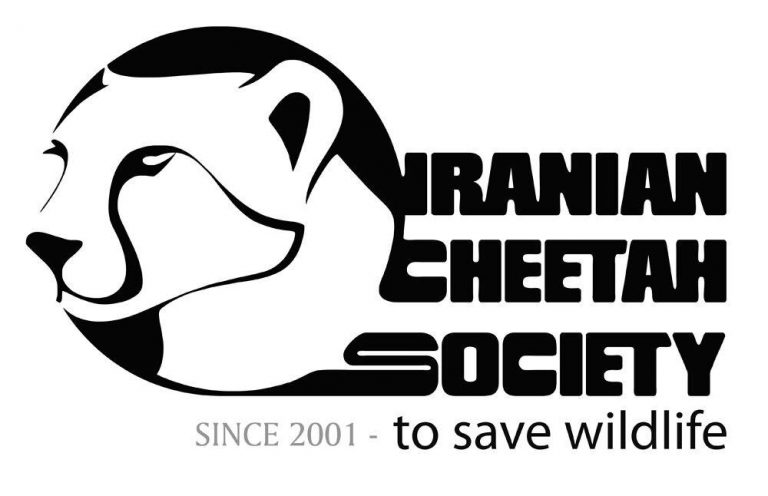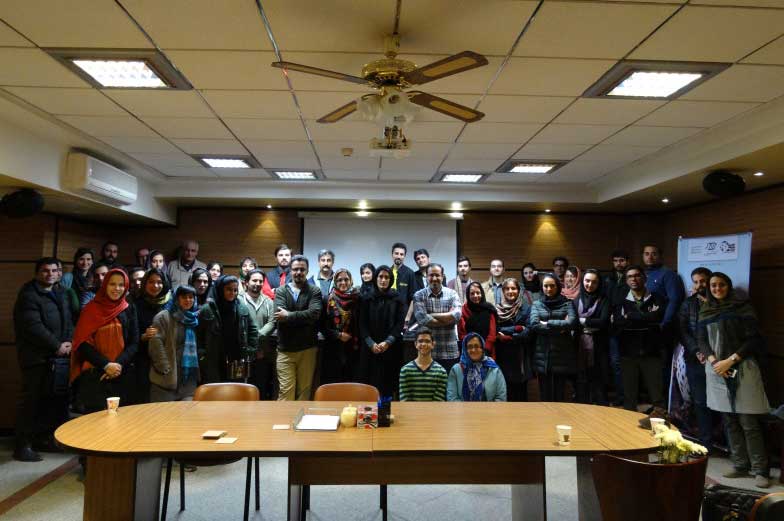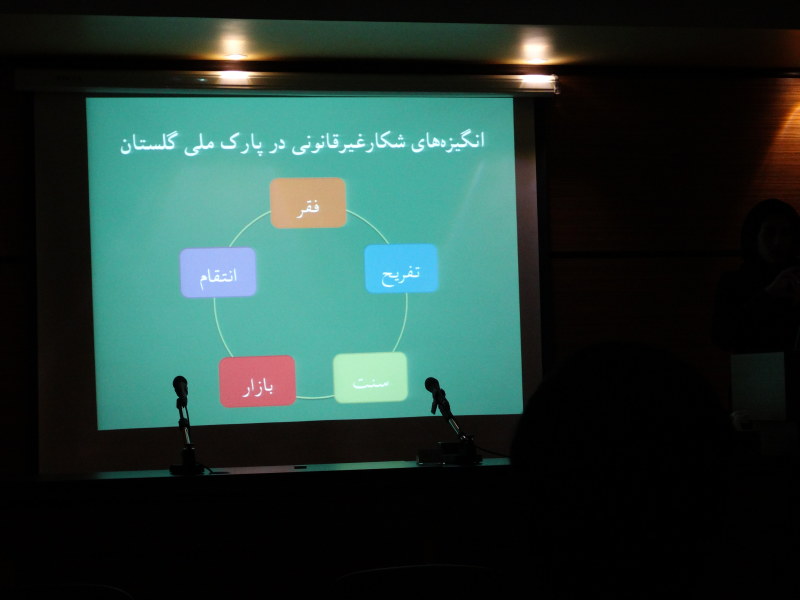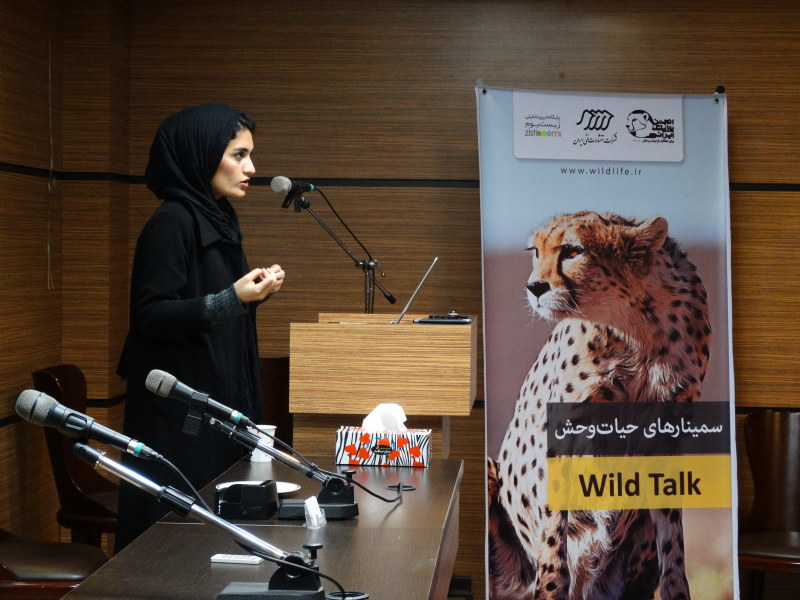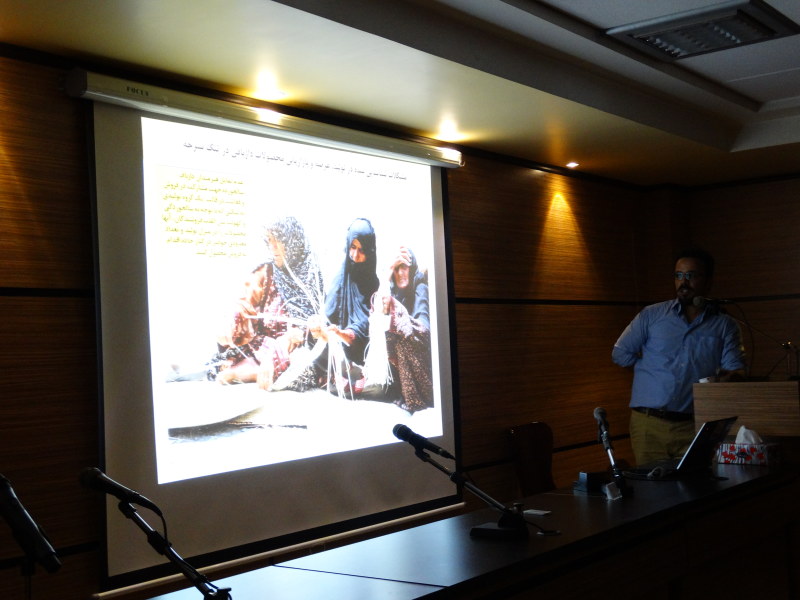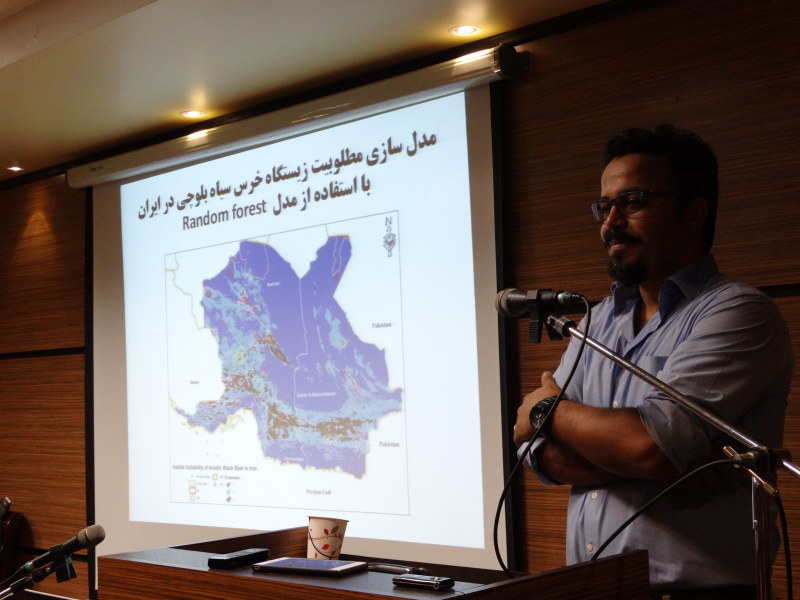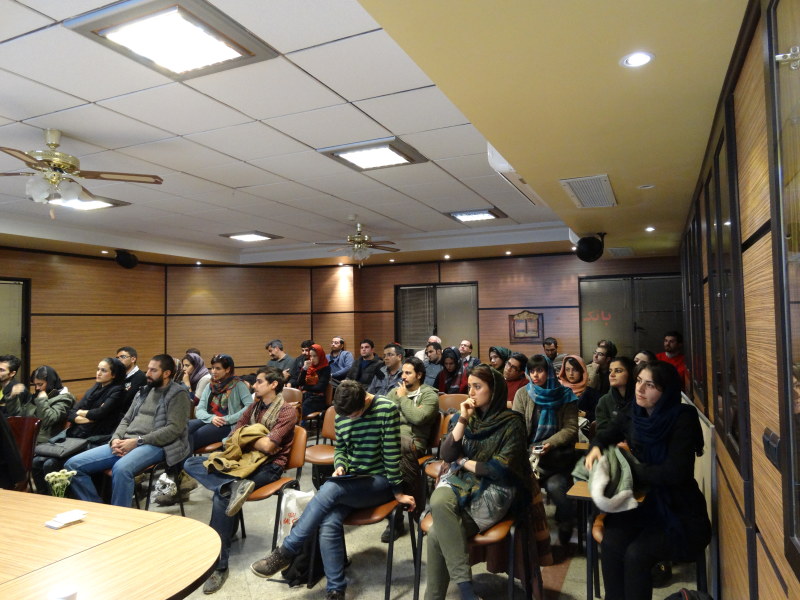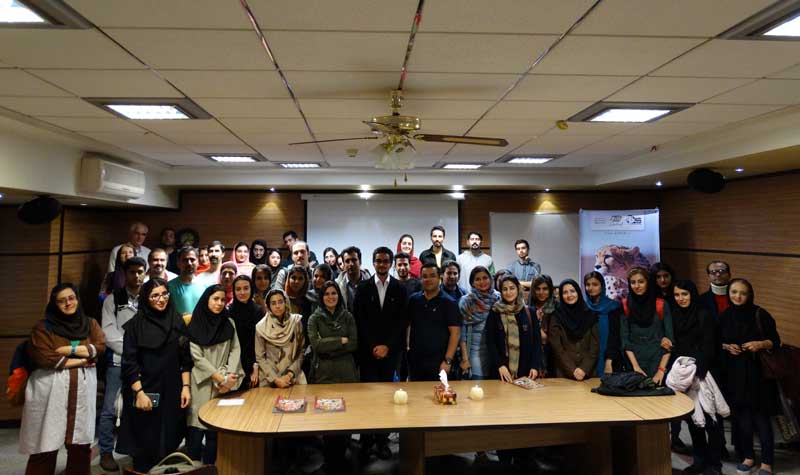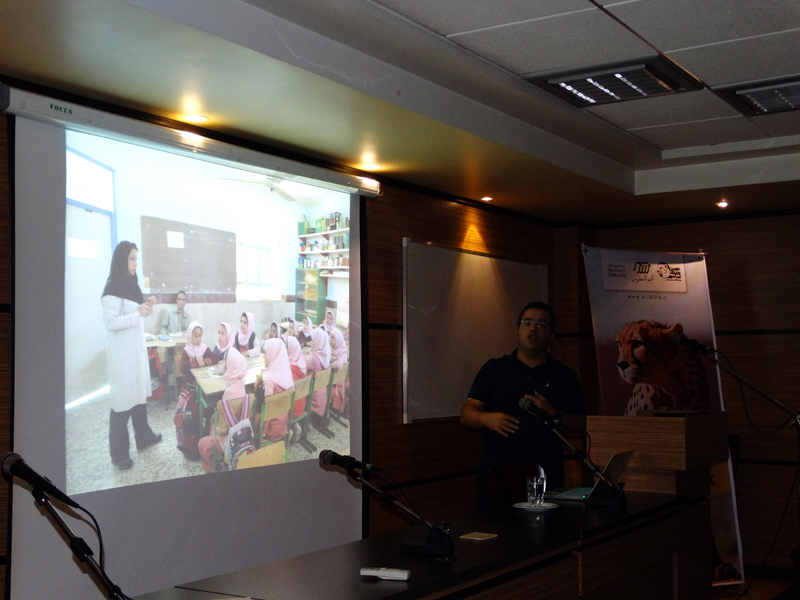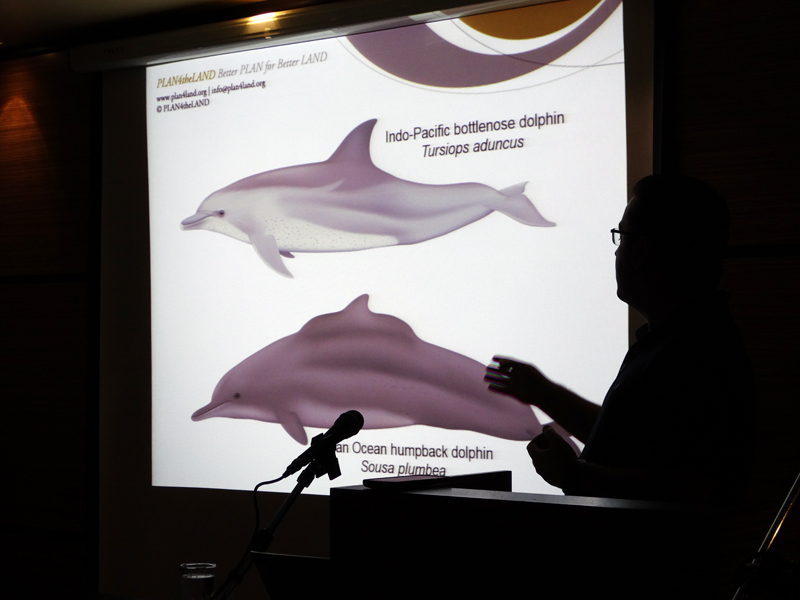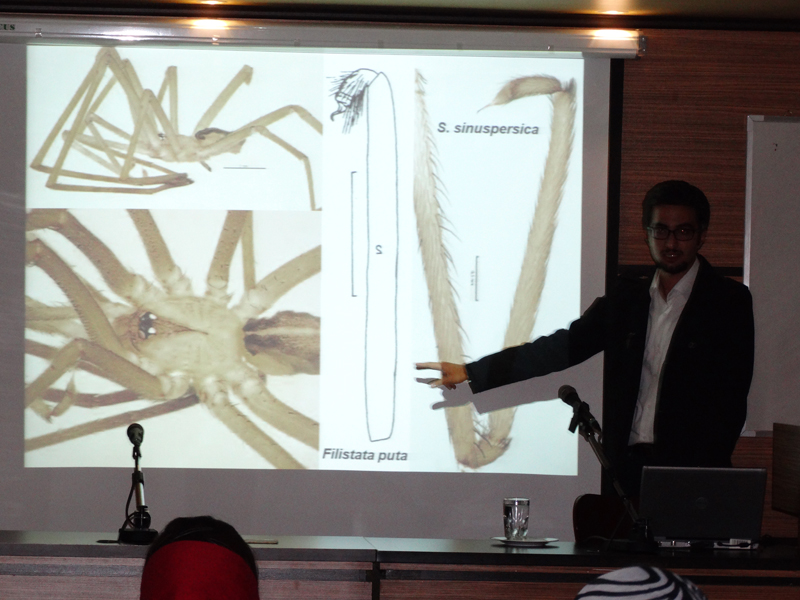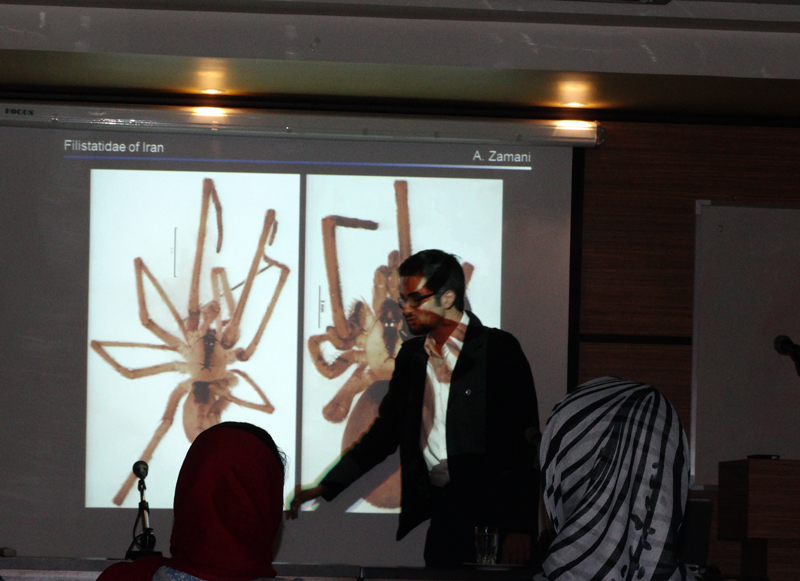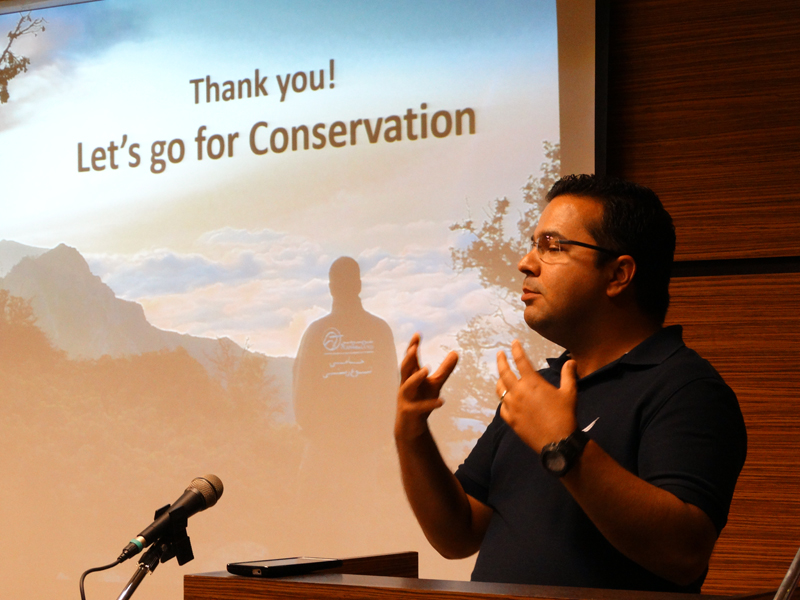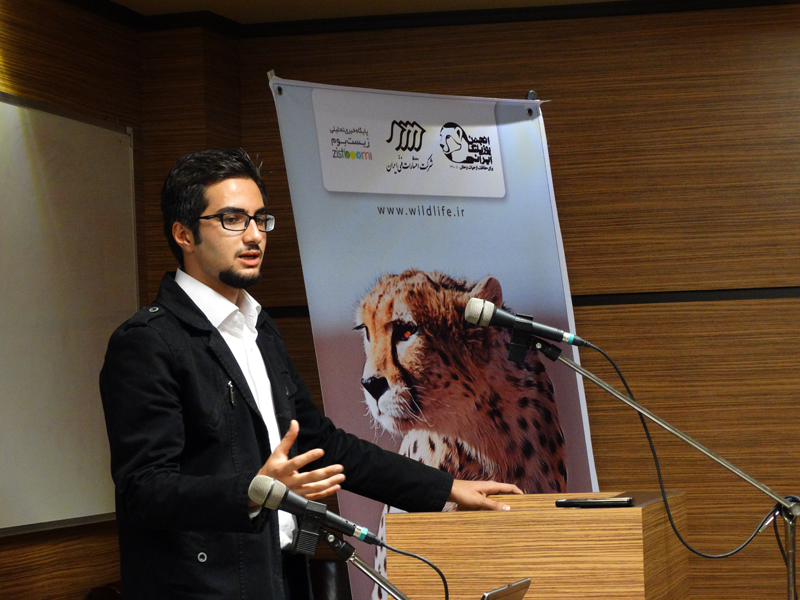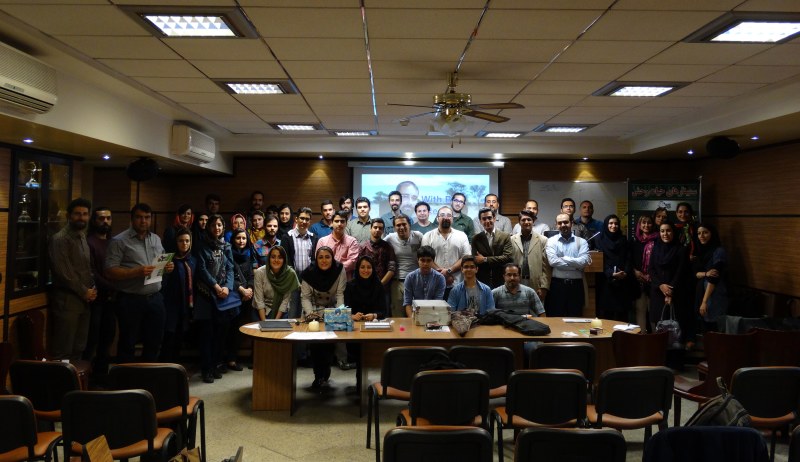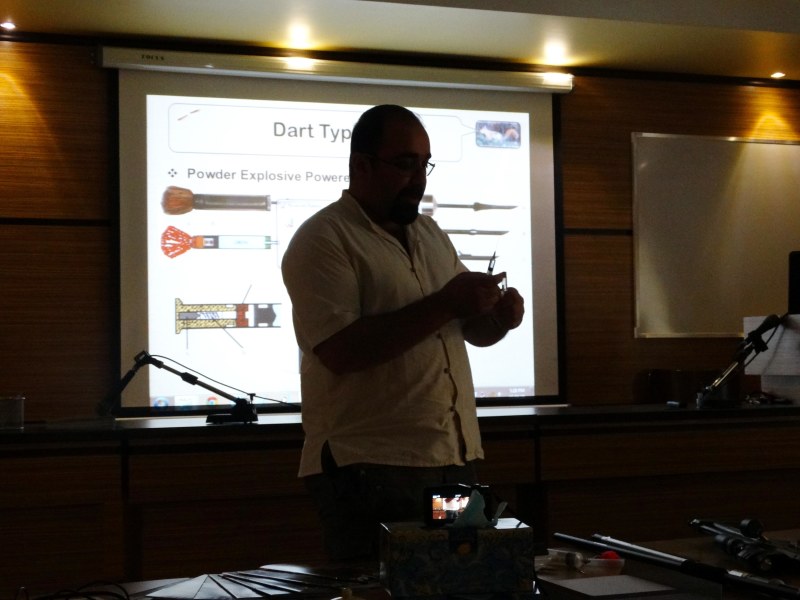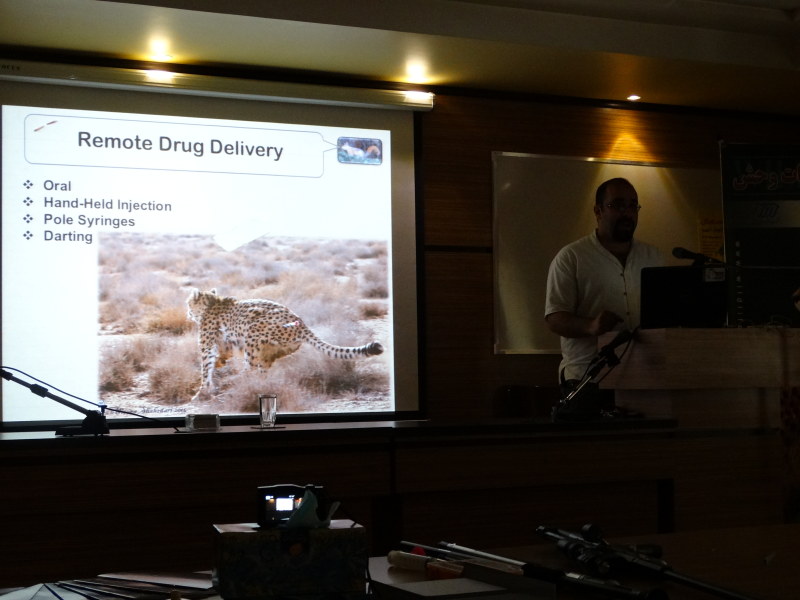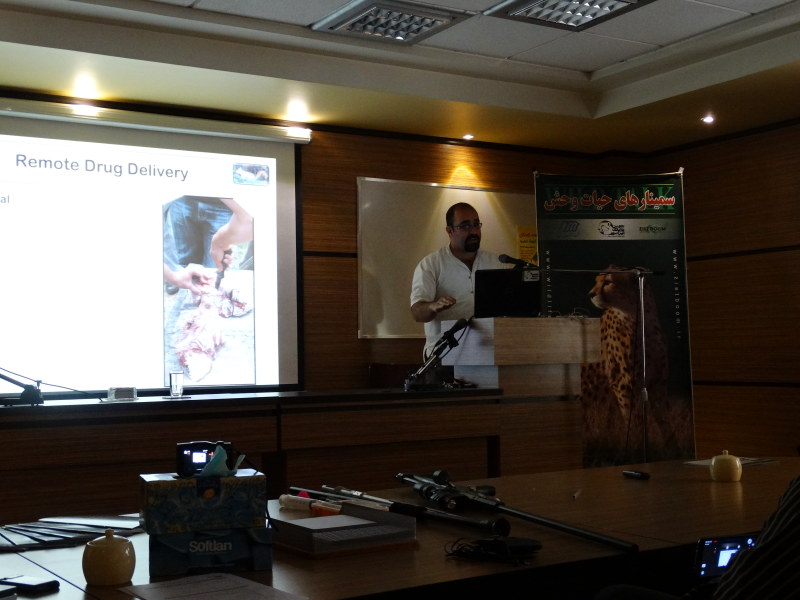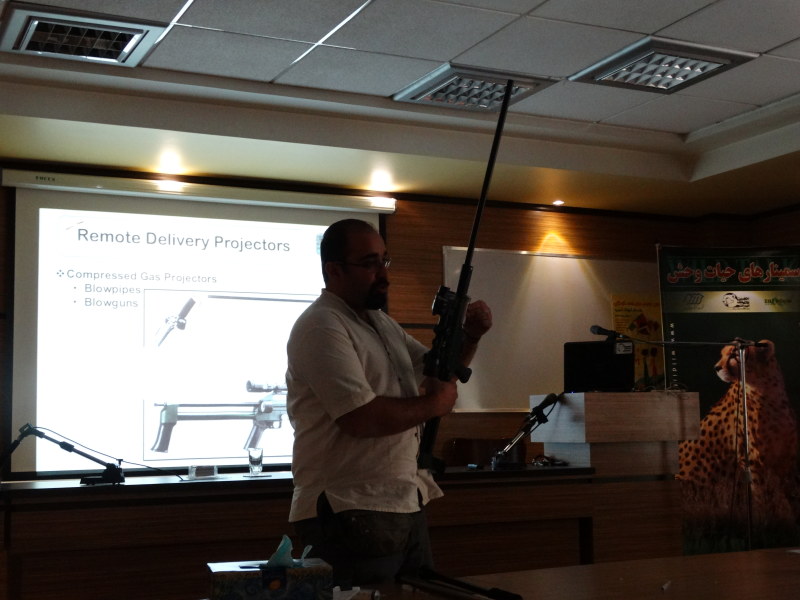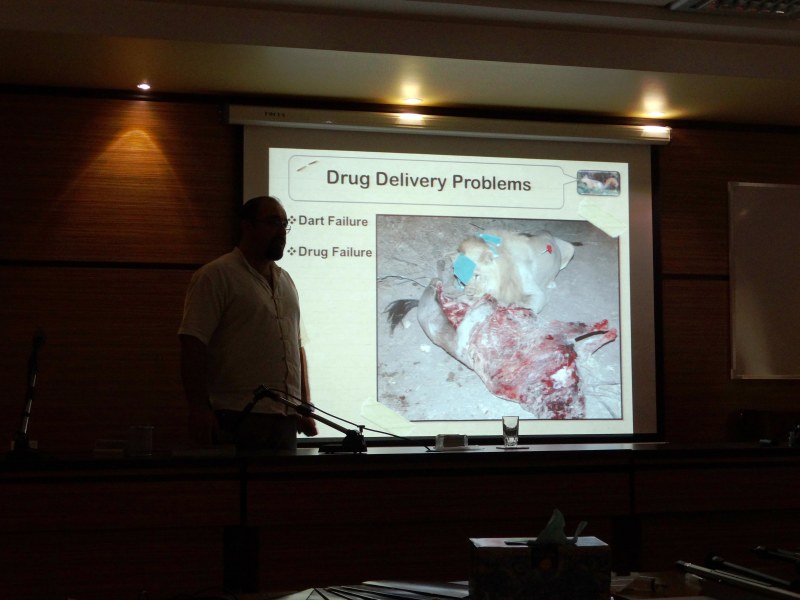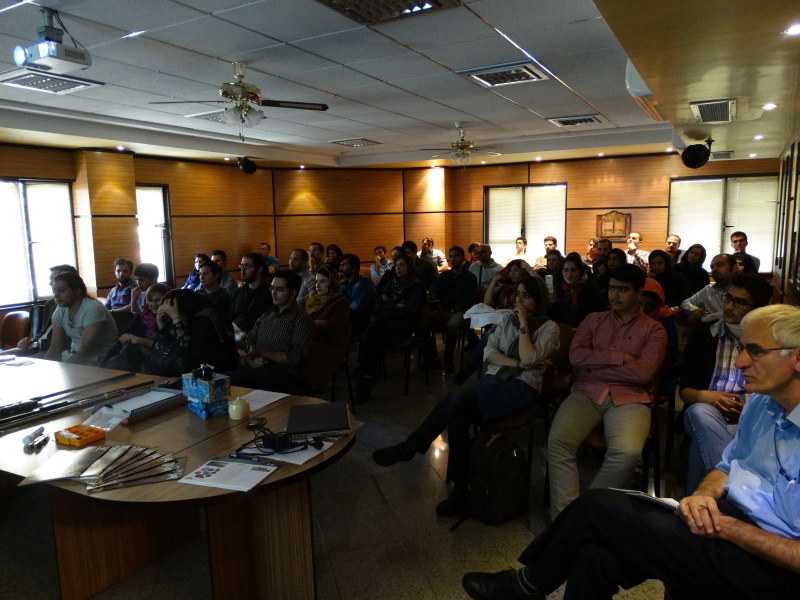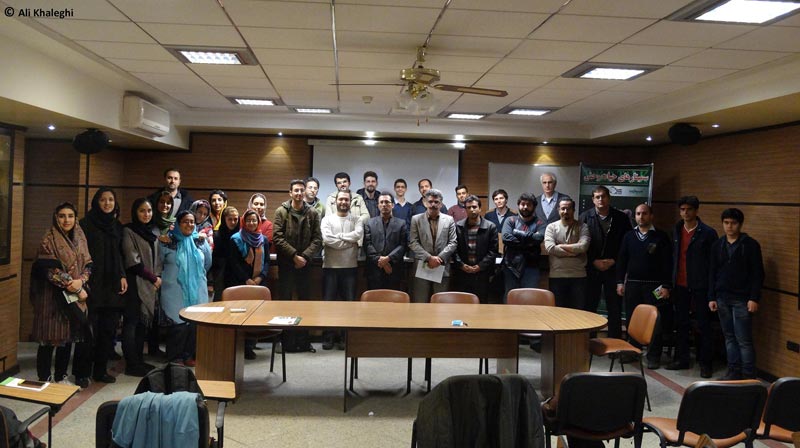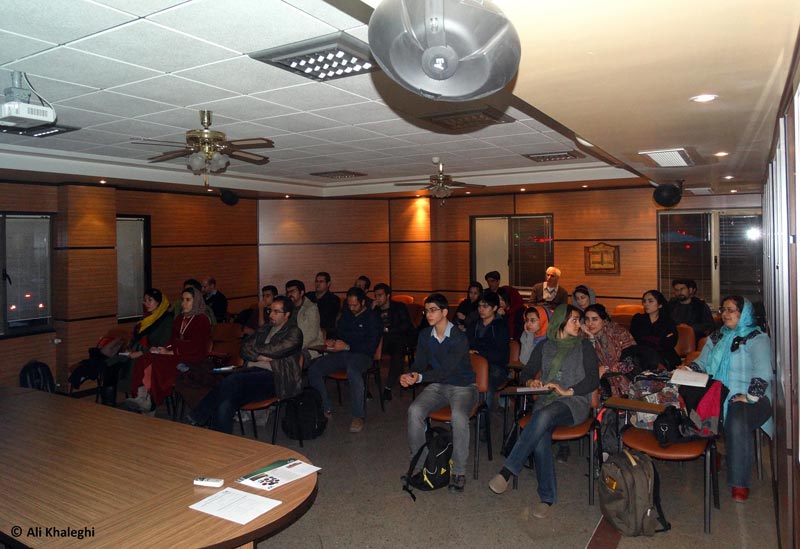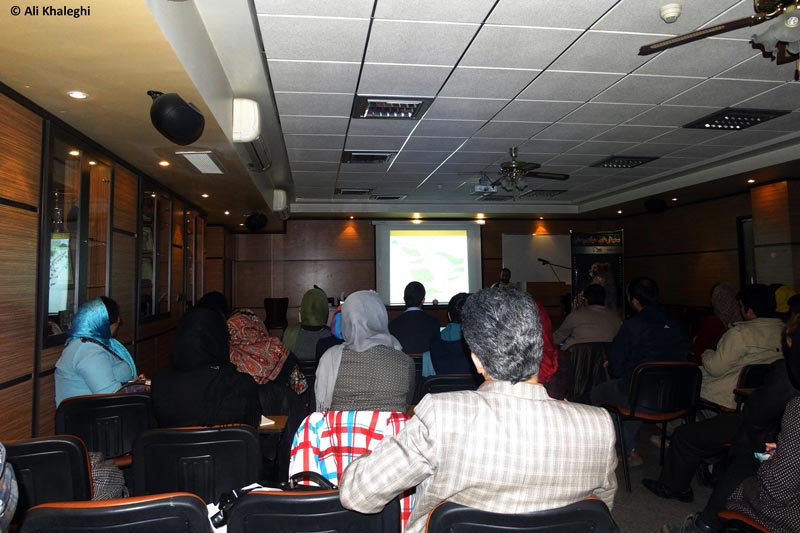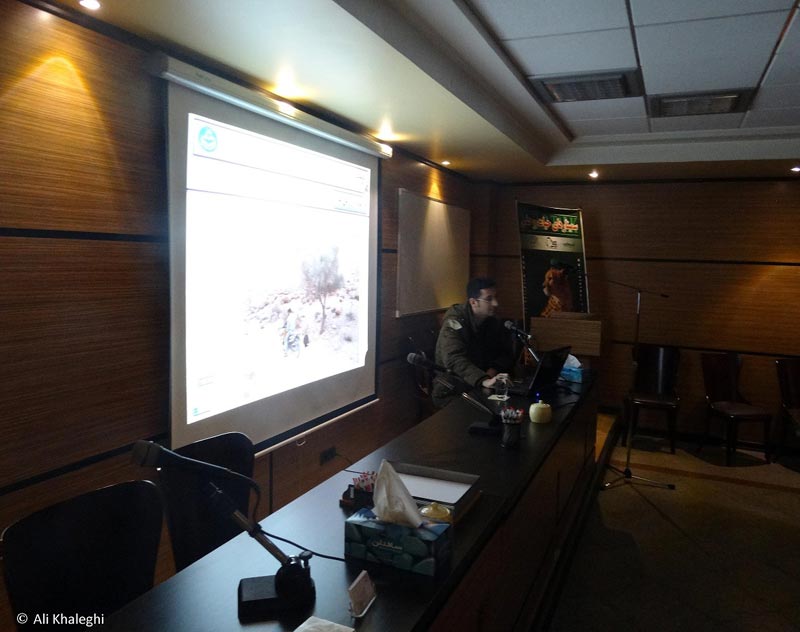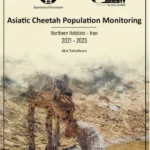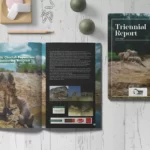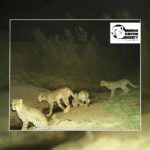On December 20th, 2015, the Iranian Cheetah Society celebrated the 24th WildTalk Seminar with two guest presenters. Sheyda Ashayeri from Persian Wildlife Heritage Foundation (PWHF) introduced her study on motivations of illegal hunting among local communities in Golestan National Park. PWHF has been running a leopard project in this reserve, and faced a high amount of camera trap theft. Sheyda explained that a reconnaissance survey suggested that local illegal hunters are responsible for the majority of losses. So the team launched a study in 8 villages inside or in peripheral of the National Park in order to reveal the underlying motivations of illegal hunting among local residents through interview-based surveys. Sheyda showed that these motivations can be grouped into five major categories of poverty, pleasure, traditional moral concept, market-related profit, and revenge. Some of these categories are highly correlated and all together may lead to illegal hunting of Golestan wildlife by local hunters. Sheyda recommended that trust building and making local communities to feel that they also share the benefits (e.g. natural resources) of the National Park, controlling the demand for bushmeat in the market, and creating new jobs are among the conservation solutions in their study.
The second presenter was Hadi Fahimi from Mohitban Society. Hadi introduced his team’s long-term study on the ecology and current conservation status of the Asiatic black bear in multiple study sites in southeastern Iran. To this aim, Hadi’s team has been using several techniques including rapid status assessment and species distribution modeling to reveal the potential distribution of the Asiatic black bear in Iran, and diet analysis using feces to shed some light on the feeding ecology of the species in the low productive habitats of southeastern Iran.
WildTalk Seminars are running by ICS and is supported by Entesharat Fanni Publications, Tehran.
Wildtalks
Three years with the WildTalk: Iranian marine mammals and spiders featured in the 23rd seminar
The Iranian Cheetah Society celebrated the 3rd anniversary of WildTalk Seminars, with two presentations about conservation of marine mammals of Iran and recent discoveries about a family of Iranian spiders, respectively.
In the first presentation, Hamed Moshiri from the Plan 4 the Land Society (P4L) presented some the conservation activities his NGO is involving in southern Iranian waters since 2009. Hamed showed how his team is using photo-identification techniques to identify estimate the population size of several species of dolphins. He also presented some findings from their ongoing study on the social behavior and food preferences of the dolphins. Conservation education campaigns are also one of the key complements of the work that P4L is doing in southern Iran.
Alireza Zamani introduced his work on family Filistatidae (also known as crevice weavers) in Iran in the second presentation. These nocturnal spiders typically build a silken tube in a circular pattern around the entrance of a crack, often among rocks or dead woods. Alireza updated the attendants with the most recent review of this spider family from Iran, in which to date at least 11 species from 4 genera has been discovered in the country.
In collaboration with Entesharat Fanni Publications, the Iranian Cheetah Society runs the WildTalk Seminar every two months and invites Iranian researchers and conservationists from different organizations to present their efforts to save the Iranian fauna and flora.
Wildlife Veterinary Featured in 21st WildTalk Seminar
On April 26, 21th “WildTalk” seminar held at Entesharat Fanni Hall, Tehran. The event brought together more than 50 researchers, students, and nature lovers. Subject covered in this event was an introduction to wildlife veterinary, presented by DVM Iman Memarian. Iman is the Chief Veterinarian at Tehran Zoo and works at Iran Department of the Environment’s Animal Rehabilitation Center in Tehran as well.
The presentation started with a brief introduction of history of wildlife veterinary as a science and how it quickly developed to an essential part of all wildlife conservation programs in the world. Iman also focused on different specializations in wildlife veterinary and how a wildlife vet should interact with animals. Additionally, a short introduction to safe capturing and anesthesia of wildlife for research and management proposes was presented.
The WildTalk is a bi-monthly seminar focusing on different aspects of wildlife conservation and management in Iran, holding jointly by the Iranian Cheetah Society, Entesharat Fanni Publications, and Zistboom News Agency. Each seminar features presentations by one or two Iranian researcher who present their work to early-career students and other nature lovers.
19th WildTalk Seminar Featured Presentations about Leopard and Cheetah Trophic Interactions and Genetic Census of Brown Bears
On January 18, 19th “WildTalk” seminar held at Entesharat Fanni Hall, Tehran. The event brought together more than 30 researchers, students, and nature lovers. Subjects covered in this event were trophic Interactions of the Persian Leopard and Asiatic cheetahs, and genetic census of Asian brown bears.
The first speaker was Ali Rezaei from University of Tehran, who presented his work on diet of sympatric Persian leopards and Asiatic cheetahs in Bafgh Protected area, Yazd Province. Using scat analysis methods in a pilot study, Ali revealed trophic interactions between these two threatened large carnivores in one of the species’ critical habitats in central Iran. Further, Ali discussed how results of his research may guide conservation managers and parishioners in conservation planning for the threatened large felids of Iran.
The second presenter, Ehsan Moqanaki, shared results of his work in Arasbaran Biosphere Reserve of East Azarbayjan province. Ehsan has used non-invasively collected faecal-DNA to estimate abundance of brown bears in this reserve on the Iranian Caucasus, NW Iran. Additionally, he has compared his genetic census of the population with the local warden’s perceived-abundance of the reserve bears. Ehsan showed that these estimates differ in an order of magnitude, and argued that such unreliable guess-estimates may mislead managers in prioritizing conservation actions for the endangered populations.
The bi-monthly WildTalk seminars are hosted by Entesharat Fanni Publications and organized by the Iranian Cheetah Society. Each seminar brings two speakers to present their most recent research on the Iranian wildlife.
“Iran’s butterflies diversity as well as application of habitat modeling to protect birds were presented to more than 30 Iranian biologists and students in the 7th Iran’s “WildTalk” seminar. Held on 5 May 2013 in Tehran, Alireza Naderi, an Iran renowned butterfly expert from Iran’s Department of Environment introduced briefly Iran’s butterflies, comprising of 400 species, including 70 endemic species which indicates high diversity of insects in the country. He also alarmed about adverse impact of human activities on butterfly diversity. Then, University of Tehran’s associate professor Afshin Alizadeh presented his speech on habitat parameters of birds and how these models can promote species conservation.
Organized by Iranian Cheetah Society (ICS) in partnership with ZistBoom News Agency and Iranian Technical Publishing Company, Iran’s “WildTalk” seminars are held monthly to present two research papers on the wildlife, aiming to share expertise and experiences among Iranian experts and managers for better nature management.
Snow Leopards and Lichens in Iran 5th WildTalk Seminar
“Lichen diversity in Iran and snow leopard conservation in Afghanistan were presented to more than 60 Iranian biologists and students in the fifth Iran’s “WildTalk” seminar. Held on 26 January 2013 in Tehran, Dr Mohammad Sohrabi from Iran’s Industrial Research Organization lectured on his research findings about diversity of lichens in Iran and their application for various human usages. Afterwards, Dr Stephane Ostrowski from the US-based Wildlife Conservation Society (WCS) presented results of an ongoing landscape conservation project in Afghan Pamir since 2006 which deals with various human aspects of conservation for benefit of the iconic snow leopard.
Organized by Iranian Cheetah Society (ICS) in partnership with ZistBoom News Agency and Iranian Technical Publishing Company, Iran’s “WildTalk” seminars are held monthly to present two research papers on the wildlife, aiming to share expertise and experiences among Iranian experts and managers
for better nature management.“
